Plant Annual Flowers For An Amazing Display Of Color
In Your Garden
Annual Flowers complete their life-cycle in just one year, and are favored by most gardeners as they have many uses. Annuals provide an abundance of color during the summer and fall and are a great asset in the herbaceous border. Many varieties look fantastic in pots, hanging baskets and as cut flowers.
They flower following the first early blooms of spring, and carry on through the summer heat when many other plants remain dormant. The fact is that although annuals flower for only one year, their amazing show of color make sure they are definitely worth the time and money invested.
In addition to the colorful display annual flowers provide, many varieties of annuals are great for attracting humming birds, butterflies and other insects that are of benefit to the garden.
The majority of annual flowers are very easy to grow and maintain, and even though a number of flowers will withstand nominal periods of dry weather conditions, there are others that really must have a constant water supply. In hot and dry conditions most annuals flowering will slow down or stop all together.
Annual flowers can be basically split up into 3 different groups. Tender annuals, these will not withstand frost, and low winter temperatures will in most cases kill off the seed.
Half-hardy annual flowers cannot withstand hard frosts, however some seed may possibly survive to be viable during the the winter season. Hardy plants won't endure hard frosts, however seed will remain viable unless of course the wintertime is exceptionally severe.
Geranium - Caliente Lavender...
It’s difficult to find this intense, almost fluorescent, lavender color in a geranium. You’ll want to pick an appropriate location for these dazzling globed blooms with their contrasting deep-green foliage and wonderful branching habit.
They’re called Geranium caliente ('hot in Spanish') due to their remarkable ability to take the heat. You can put them in containers, tubs or window boxes and add a couple of vinca vine for a cottage-garden effect.
Geraniums are also one of the best annual flowers for hanging baskets, but are also well-suited to an annual bed or as a fill-in for your perennial border. Perennial in zones 9-11; annual in zones 3-8.
Lobelia Laguna White...
Lobelia Laguna White is a gorgeous white Lobelia with good sized flowers, and are an outstanding plant for all summer flowering performance.
This Lobelia is very effective as a mixed container plant, although it has the color and habit that enables it to stand alone as a specimen. Can be used in hanging baskets, combinations, window boxes, and landscapes.
Lobelias are well known for their tolerance of both heat and cold, and this Lobelia Laguna offers unbeatable garden performance. This plant can be planted as a perennial in zones 9-11. In zones 3-8 it is an annual only.
Petunia Supertunia Bermuda Beach...
Petunia Supertunia Bermuda Beach displays salmon/coral flowers that are exceptionally free-flowering. 'Bermuda Beach' spreads less vigorously than most Supertunias.
This petunia is drought and heat tolerant and also attracts hummingbirds and butterflies. 'Supertunia Bermuda Beach' is self-cleaning and will not require deadheading. Supertunia is a long time favorite of growers and gardeners.
These flowers are virtually maintenance free and will provide you with long-term color in full sun areas during the entire season. They are perfect for baskets, beds, balconies and combination plantings.
Petunias are extremely heat and drought tolerant once they have been established in the ground or pot. They do not need to have their dead flower heads removed to continue flowering and they are not leggy.
They grow fast and consequently need sufficient moisture and fertilzer. This plant can be a perennial in zones 9-11. In zones 3-8 it is an annual only.
Verbena Lanai Blush White...
Verbena Lanai Blush White has bright white flowers with pale yellow centers. Lanai flowers early and is free flowering from tip to crown. The flowers on this verbena look fantastic and attract butterflies. Verbena is one of those garden essentials that bloom from spring to fall with very little fuss.
In frost-free climates it is grown as a perennial, but most of us will have to grow it as an annual. Plants grow in clumps that reach a height of six to twelve inches. These enchanting small plants are relatively carefree. In fact, the main cause of problems with verbena is over-pampering, particularly overfeeding and over watering. This plant can be a perennial in zones 9-11. In zones 3-8 it is an annual only.
Daisy Soprano White...
The Daisy Soprano White exhibits slightly cupped Daisies that have marvelous heat tolerance and an extra-compact habit. The beautiful clear colors and flexibility make this Proven Winner series outstanding. They have large white flowers with a compact growth habit.
They’re heat-tolerant, so they won’t shy away from hot summer conditions and full sun. Daisy's require a sunny spot with fertile, well-drained soil and should be kept well watered in the summer.
They may be used as a cut flower and they are excellent in window boxes, pots, and rock gardens. The daisy is attractive to bees, butterflies and/or birds, plus they are resistant to deer.
Winter hardy to USDA Zones 10-11 they are grown as an annual in other cooler climatic zones. Deadhead spent flowers to encourage additional bloom. The deeply cut, dark green leaves are aromatic when bruised. For zones 9-11, this plant can also be a perennial.
Gardening Tools › Flower Gardening › Annual Flowers
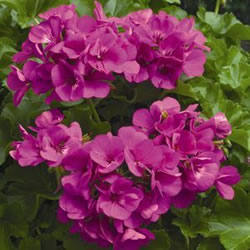
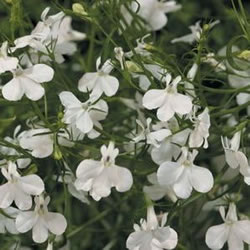
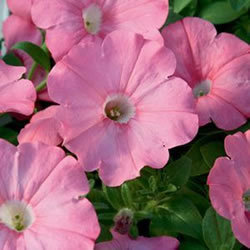
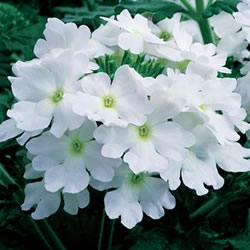
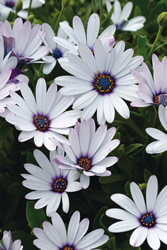








New! Comments
Have your say about what you just read! Leave me a comment in the box below.